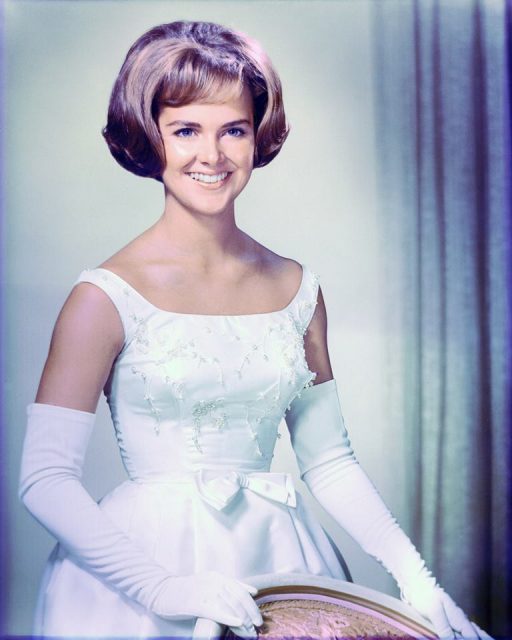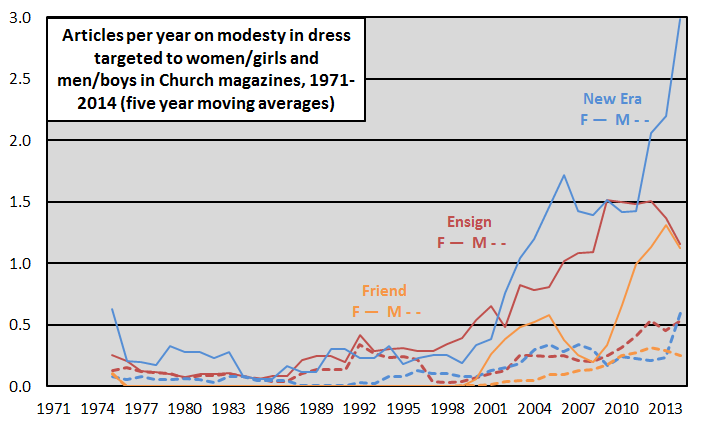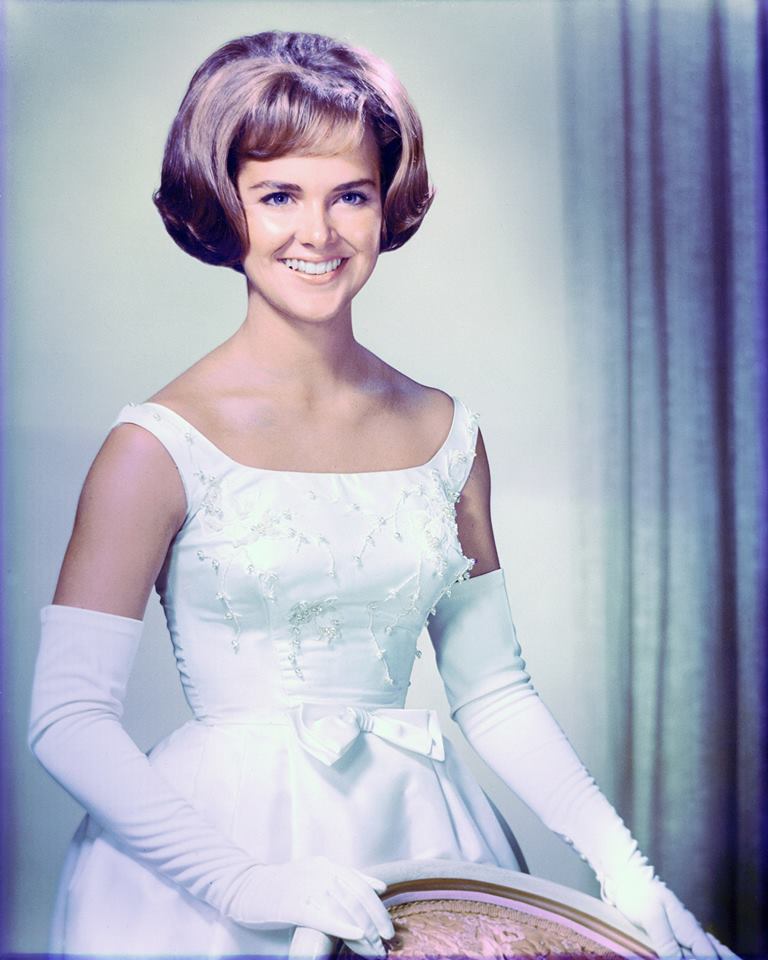The Salt Lake Tribune reported yesterday on a fascinating study that the Mormon blog Zelophehad’s Daughters has done into the rise of modesty rhetoric in Mormonism.
Using three official LDS church magazines (The Ensign, New Era, and The Friend), the author tracked references to modesty from 1971 to 2014. How many times did the magazines encourage Mormons to dress modestly? What age group was being targeted by this advice? What gender?
Some findings:
- There has been a sharp increase in modesty discussions for young women* since about 2000, with the most marked spike occurring in the last three and a half years.
- Despite many people’s argument that modesty rhetoric is directed to both boys and girls equally, the numbers tell a different story. Boys (represented by the dashed blue line) almost never have articles telling them how to dress, unlike girls (solid blue line), who hear it six times as often.
- In the last year, there has been a complete drop-off in modesty discussions for children 11 and under.
In related news, CNN reports on a story that has been brewing in the Mormon Twitterverse for days: A Utah public high school yearbook Photoshopped sleeves onto the pictures of some female students who actually wore tank tops—without the students’ knowledge or permission.
When a tax-supported public school in a predominantly Mormon area imposes Mormon modesty standards on female students who may or may not be LDS—and does not alter boys’ photos in any way—that should tell us: “Utah, we have a problem.”
Interestingly, it’s a recent problem. The Mormon sexualization of women’s shoulders—and even children’s shoulders (!), as this Friend article from 2011 suggests—is something new.
Mormon females used to wear sleeveless tops and dresses, as this photo of the 1964 BYU Homecoming Queen demonstrates. The For the Strength of Youth manual didn’t have any restrictions about sleeveless clothing then (though backless and strapless were flat out).
What changed?
There are likely several factors at work. First, as the broader culture has become more permissive, even to the point of marketing sexy clothing for little girls, it makes perfect sense that the Church would strive to counteract it, even if that means going too far in the other direction. It’s wrong for children—of either gender—to be dressed in a sexual way. As the APA reports, a too-early focus on sex can have negative effects on kids’ self-esteem and mental health.
Second, this may be part of a broader trend for the Church to spell out in precise detail what its standards entail, especially for teens. For the Strength of Youth used to be sixteen pages. Now it is three times that length.
But neither of the above reasons addresses the question of why shoulders in particular have emerged as a litmus test of modesty.
Perhaps it’s because shoulders are a recognizable symbol of human power and strength.
- When we work hard, we put our shoulders to the wheel.
- When we build community, we shoulder one another’s burdens.
- When we destroy community, we give others the cold shoulder.
- When someone we love is in pain, we provide them with a shoulder to cry on.
- When we feel superior, we are head and shoulders above everyone else.
- When we are angry and lash out defensively, we have a chip on our shoulder.
- When we carry out our duties successfully, we shoulder responsibility.
- When we meet someone powerful, we rub shoulders with them.
- When we oppose someone powerful, we stand shoulder to shoulder with others in the fight.
- When we push someone aside, we shoulder past them.
In every one of these examples, the human shoulder is a locus of might.
As tense discussions continue to erupt about Mormon women’s power, it’s not an accident that the corporeal locus of that tension has become their shoulders.
We are acting out our discomfort with women’s power by covering their shoulders, the part of the body that most represents responsibility, capability, and authority.
* “Young women” is used in the LDS Church to refer to any teenage girl ages 12 to 18.








